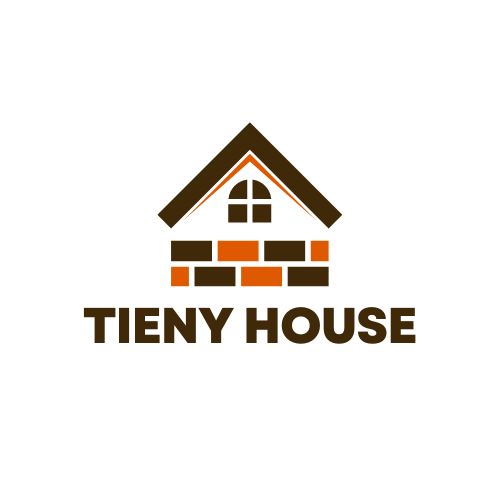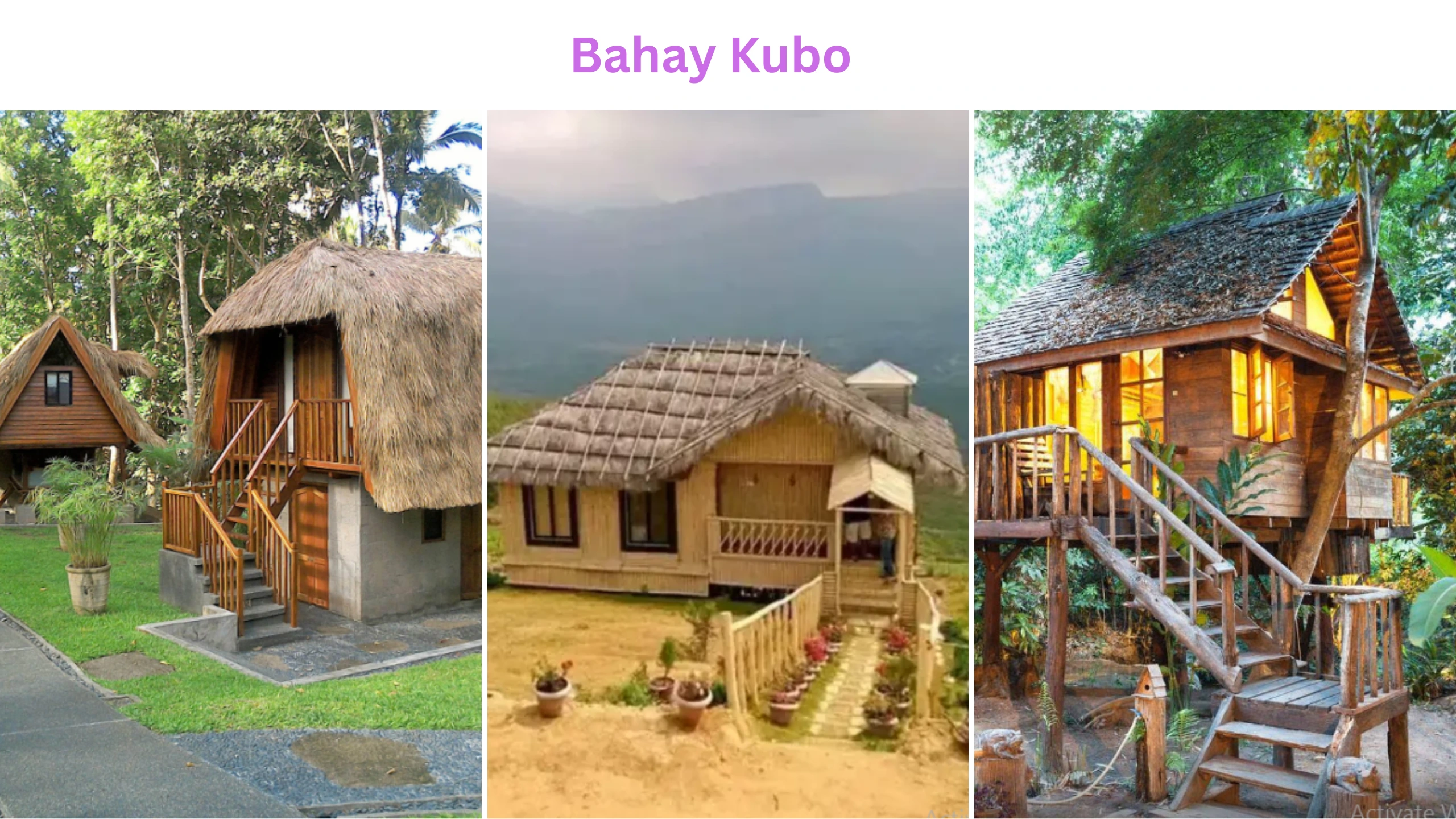On the other hand, the Contemporary Bahay Kubo preserves its cultural charm while incorporating modern materials and amenities for a comfortable and practical lifestyle.
Join us as we explore the enchanting features and benefits of Bahay Kubo, celebrating its enduring legacy and inspiring integration into modern home designs.
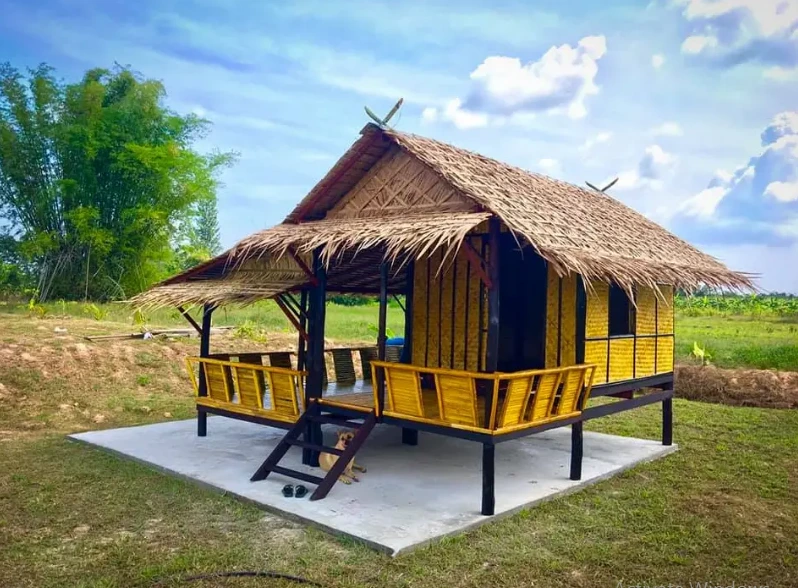
Source Pinterest
What is Bahay Kubo?
Bahay Kubo emphasizes Filipino culture and sustainable lifestyle. Its distinctive architecture employs bamboo, cogon grass, and Nipa palm fronds.
The open plan layout fosters communal living and family togetherness, while elevated floor lines protect against flooding and offer better views.
With its high ceilings and intricate craftsmanship, Bahay Kubo showcases the ingenuity and creativity of Filipino culture, making it a timeless and culturally significant architectural gem.
What are the Types of Bahay Kubo?
Bahay Kubo comes in two main types. The Traditional Bahay Kubo showcases Filipino cultural heritage with natural materials and an open plan layout.
The Contemporary Bahay Kubo incorporates modern construction techniques and materials while preserving its traditional charm. Following are types of Bahay Kubo.
Contemporary Bahay Kubo
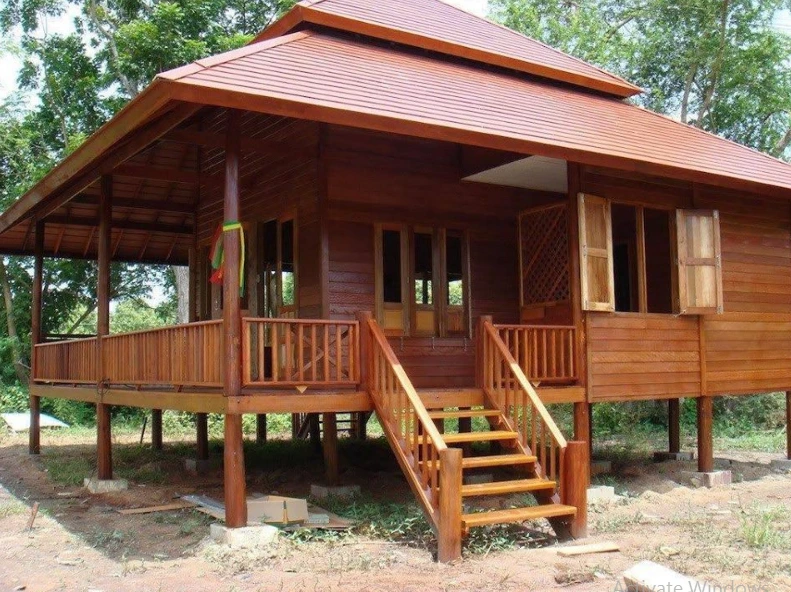
Source Pinterest
This type of Bahay Kubo retains the essence of the traditional design while incorporating modern materials and construction techniques. It often features concrete or steel elements alongside traditional bamboo and nipa palm, creating a more durable and long lasting structure.
Contemporary Bahay Kubo may also include modern amenities and interior designs, making it suitable for modern living while preserving the traditional style’s cultural charm.
Traditional Bahay Kubo
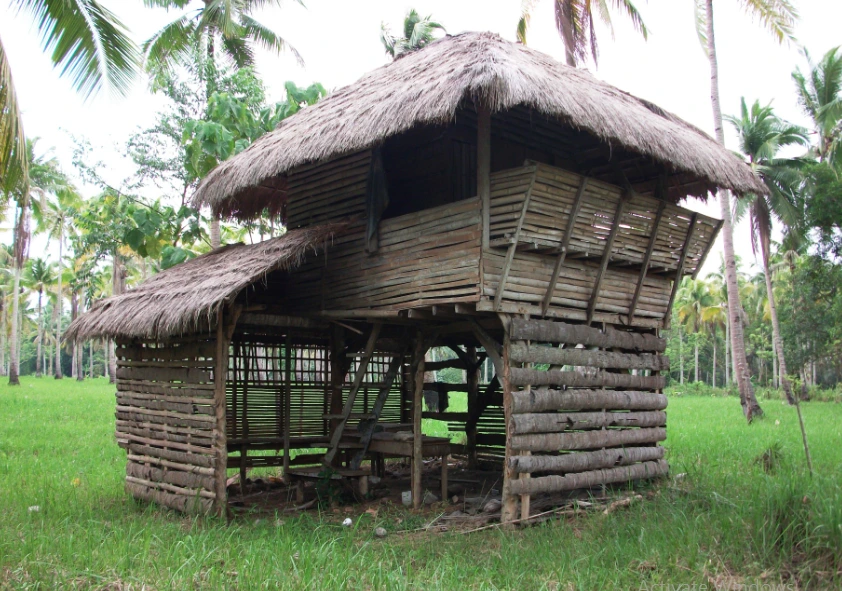
Source Pinterest
The quintessential Filipino dwelling, the Traditional Bahay Kubo showcases the rich cultural heritage of the Philippines. It uses natural and sustainable materials like bamboo, cogon grass, and nipa palm for the roofing and walls.
The open plan layout fosters a sense of communal living, promoting family togetherness. Traditional Bahay Kubo typically sits on bamboo stilts, protecting against flooding and a cooler living environment.
How Much Does a New Bahay Kubo Cost to Build?
The cost to build a modern Bahay Kubo can vary depending on the size, location, and materials used. On average, constructing a small to medium sized modern Bahay Kubo can range from $20,000 to $50,000.
This estimate includes expenses for materials, labour, permits, and additional features like modern amenities and interior furnishings.
While using sustainable and locally sourced materials can help reduce costs, the final price will ultimately depend on the homeowner’s specific preferences and budget.
Features of Bahay Kubo

Source Pinterest
Adding Bahay Kubo elements to your modern home makes it more culturally interesting and eco friendly. Using native materials like bamboo, cogon grass, and nipa palm shows you want to live healthily.
Large windows let in a lot of natural light and air, and an open floor plan makes the room feel big and roomy. An elevated finish floor line keeps water out and gives you a better view. High ceilings help airflow and give a room a feeling of grandeur.
1: Materials of Bahay Kubo
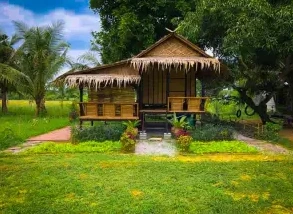
Source Pinterest
The materials of Bahay Kubo are primarily natural and sustainable, reflecting the native ingenuity of the Philippines. Bamboo, a versatile and eco friendly material, is used for the framework, walls, and flooring.
Cogon grass and nipa palm leaves serve as roofing, providing excellent insulation and ventilation. These organic materials showcase the country’s cultural heritage and promote environmental consciousness in modern home designs.
2: Large windows of Bahay Kubo
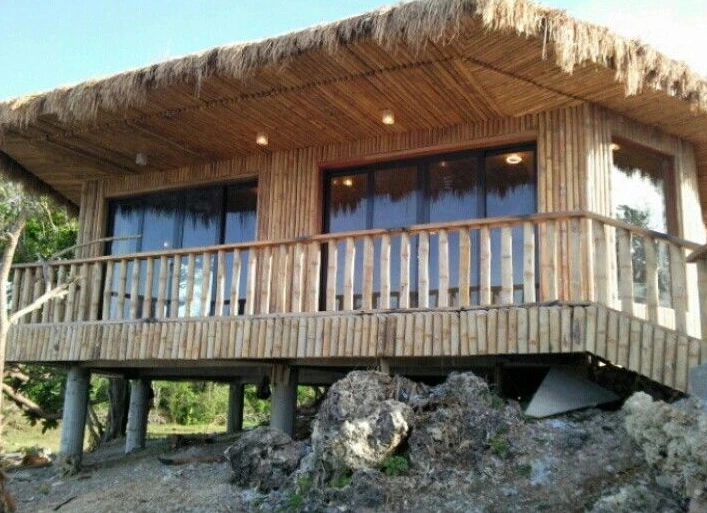
Source Pinterest
Large windows in Bahay Kubo are strategically designed to maximize natural light and air circulation. They create a well ventilated and bright interior positioned to take advantage of prevailing winds.
These windows also offer captivating views of the surrounding landscapes, connecting occupants with nature while preserving privacy through traditional wooden lattice designs.
3: Elevated Finish Floor Line
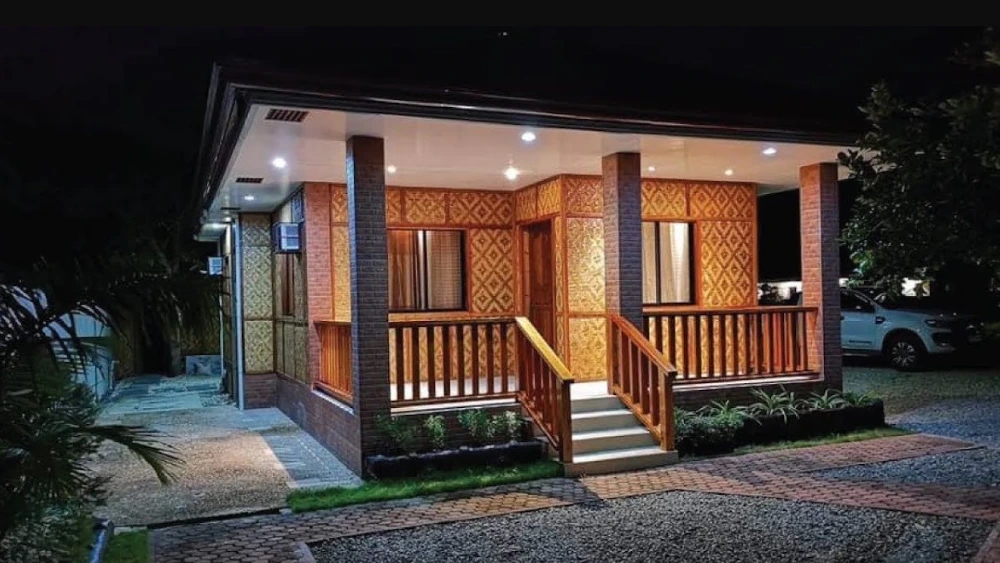
Source Pinterest
The elevated finish floor line is a distinctive feature of Bahay Kubo, serving multiple purposes. Raising the living space above the ground level helps protect against flooding during heavy rains or high tides.
Additionally, this elevation enhances air circulation, reducing humidity and providing a cooler environment in warm tropical climates. Moreover, it allows for better views and a sense of openness in the interior.
4: Open plan of Bahay Kubo
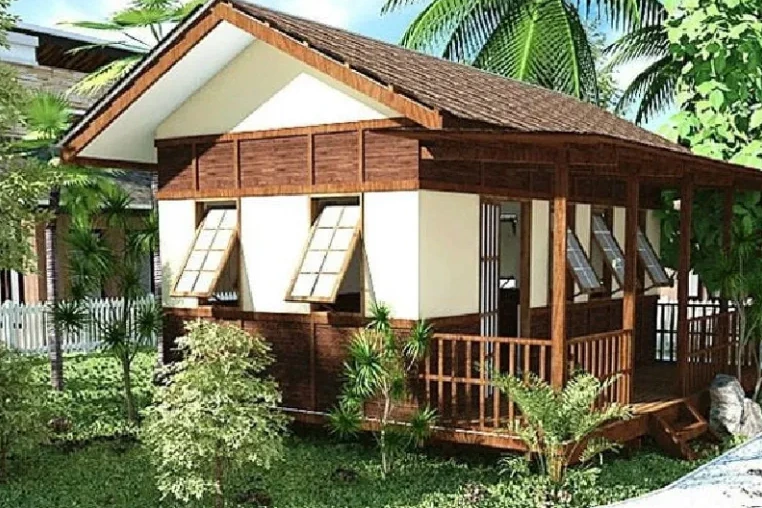
Source Pinterest
The open plan layout is a hallmark of Bahay Kubo’s design, fostering a sense of communal living and facilitating family interactions. The absence of walls between the common areas creates a spacious and flexible living space.
This design promotes a strong sense of togetherness and adaptability to various activities, making the home a welcoming and dynamic environment for family gatherings and social interactions.
5: High Ceiling of Bahay Kubo
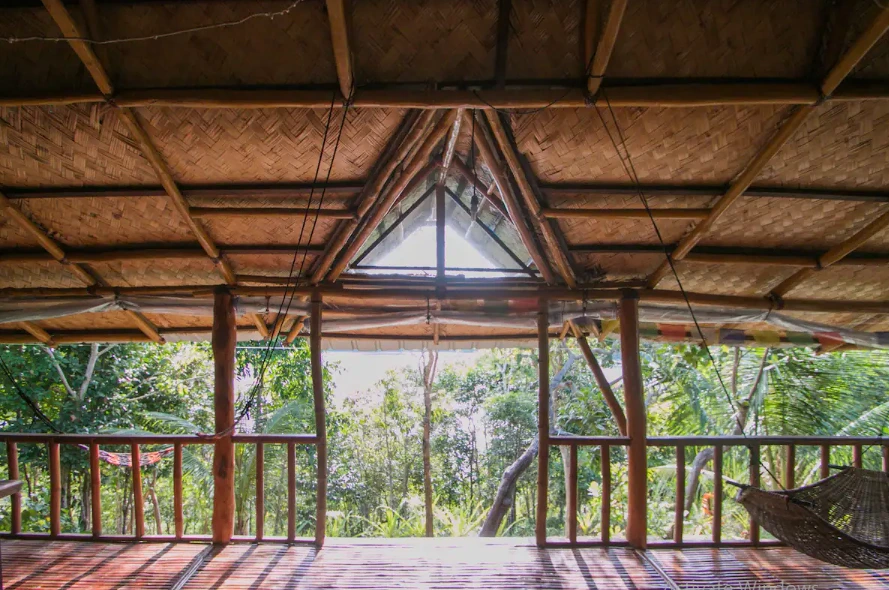
Source Pinterest
Bahay Kubo typically features high ceilings, providing a grand and airy ambience. The generous vertical space adds a sense of openness and enhances natural ventilation, promoting a comfortable and cool interior.
The high ceiling design, often adorned with traditional wooden beams and intricate details, showcases the Philippines’ skilful craftsmanship and cultural heritage, making the Bahay Kubo a timeless and iconic architectural masterpiece.
What Makes Bahay Kubo Unique?
Bahay Kubo is unique due to its distinct architectural and cultural characteristics. Its traditional design incorporates natural and sustainable materials like bamboo, cogon grass, and nipa palm, showcasing native ingenuity and eco friendliness.
The open plan layout fosters a communal living experience, promoting family togetherness and adaptability. Elevated finish floor lines protect against flooding and offer elevated views. The high ceilings not only enhance ventilation but also showcase intricate craftsmanship.
Benefits of living in a Bahay Kubo
Living in a Bahay Kubo offers numerous benefits. Its use of natural materials promotes eco friendliness and a connection with nature. The open plan layout fosters communal living and family togetherness.
The elevated finish floor line protects against flooding, while the high ceilings enhance ventilation and create a sense of openness.
Ø Eco Friendly Living
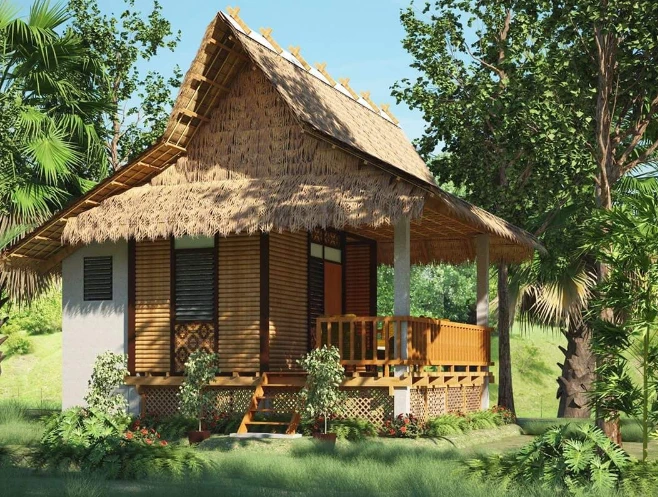
Source Pinterest
One of the significant benefits of living in a Bahay Kubo is its eco friendly nature. Using natural and sustainable materials like bamboo, cogon grass, and nipa palm for construction reduces the ecological footprint.
These organic materials are renewable and biodegradable, making them environmentally friendly choices. By living in a Bahay Kubo, residents contribute to preserving the environment and promoting sustainable living practices.
Ø Communal Living Experience
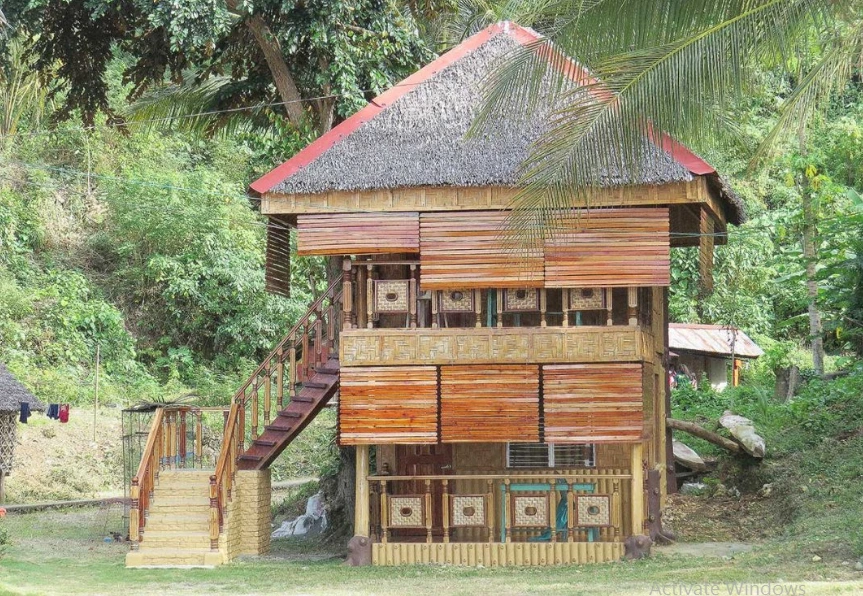
Source Pinterest
The open plan layout of a Bahay Kubo fosters a strong sense of communal living. With minimal partitions between the common areas, family members can easily interact and engage with one another. This design promotes togetherness and a more intimate family bond.
Sharing communal spaces encourages family members to participate in each other’s daily activities, making it easier to create lasting memories and strengthen familial relationships.
Ø Natural Ventilation and Comfort
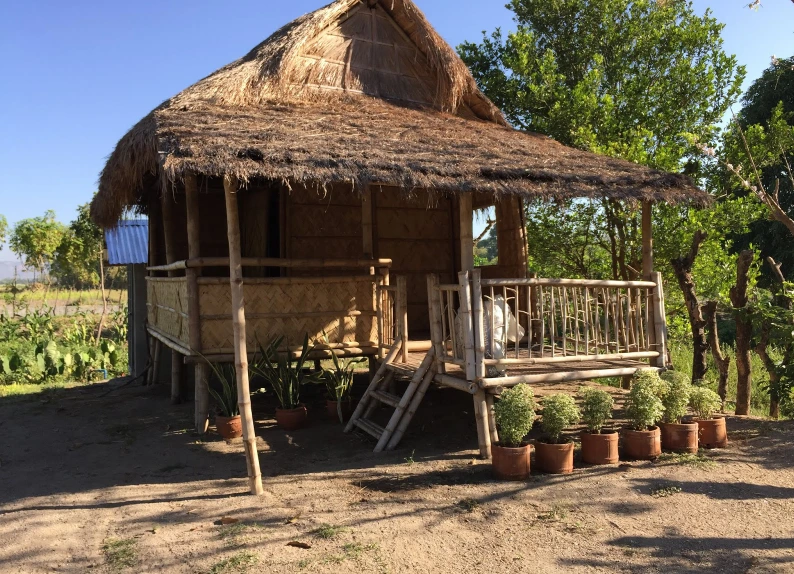
Source Pinterest
Bahay Kubo’s design takes advantage of natural ventilation. The high ceilings and large windows strategically positioned to capture prevailing winds promote excellent airflow throughout the living spaces.
This natural ventilation helps keep the interior cool and comfortable, especially in tropical climates. Using organic materials like cogon grass and nipa palm for roofing provides effective insulation, further contributing to a comfortable and pleasant living environment.
Ø Connection with Nature
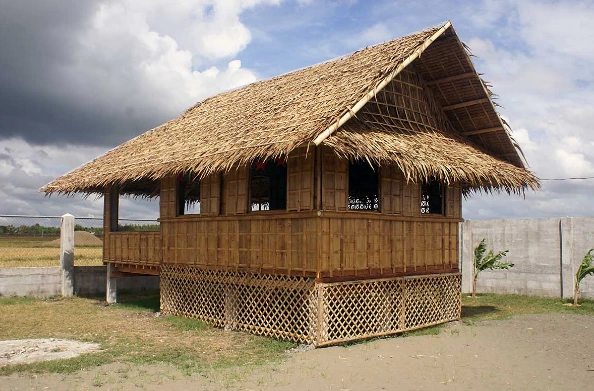
Source Pinterest
Living in a Bahay Kubo allows residents to stay closely connected with nature. The seamless integration of the house with its surroundings, whether in a rural landscape or in a garden, offers stunning views of nature’s beauty.
The open layout and large windows provide captivating vistas of the surrounding greenery or landscapes, allowing occupants to embrace their natural surroundings’ serene and tranquil ambience.
This connection with nature promotes peaceful and mindful living, enhancing overall well being and contentment.
Conclusion
Bahay Kubo remains a symbol of Filipino ingenuity and eco conscious living. Its traditional elements, such as bamboo, cogon grass, and nipa palm, exemplify the harmonious relationship between nature and architecture.
The open plan layout fosters a sense of togetherness, while the elevated finish floor line and high ceilings enhance comfort and ventilation.
Preserving the essence of the past while incorporating modern sensibilities, Bahay Kubo continues to be a unique and cherished architectural gem, capturing the hearts of both Filipinos and admirers worldwide.
If anyone wants to read more about tiny houses, they can read my article on my website, TienyHouse.
Frequently Asked Questions
What is Bahay Kubo?
Bahay Kubo is a traditional Filipino dwelling that showcases the country’s cultural heritage and sustainable living practices. It is characterized by its use of natural materials like bamboo, cogon grass, and nipa palm for the roofing and walls, along with an open plan layout that promotes communal living.
Can Bahay Kubo Be Adapted to Modern Homes?
Yes, Bahay Kubo elements can be incorporated into modern home designs. Adding native materials like bamboo and cogon grass, using large windows for natural light and ventilation, elevating the finish floor line for better views and flood protection, and implementing an open plan layout are ways to integrate Bahay Kubo features into modern living spaces.
Can Bahay Kubo Be Customized for Modern Amenities?
Yes, Bahay Kubo can be customized to include modern amenities and conveniences. While the traditional design preserves its cultural charm, modern construction techniques allow for integrating electricity, plumbing, and modern appliances.
